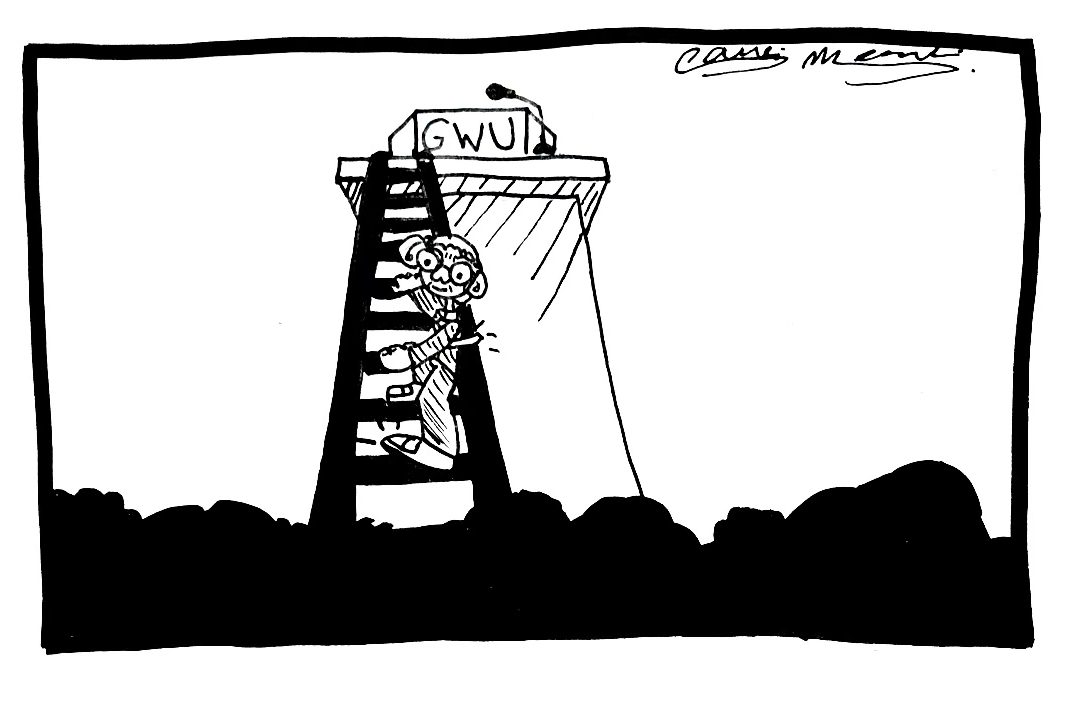“Ladies and gentlemen” is among the most common greetings heard before classes, but it ignores students who do not identify with either descriptor.
Using gendered language in the classroom reinforces gender binary beliefs, creates division among students and makes the classroom environment less welcoming to non-binary students. The issue is not specific to the classroom. Gendered products, like clothing and merchandise in the GW Campus Store, are also unnecessary when the University is selling clothing like sweatshirts and t-shirts that could be worn by any gender.
Officials say the University is committed to being inclusive, but gendered speech from professors and division between male and female sections of the campus store prove that there is still room to improve. The University should work to be more cognizant of these issues by encouraging professors to avoid gendered language and creating a more inclusive campus store.
When professors and speakers use gendered language like “ladies and gentlemen” or “guys and gals” to address the class, it is a form of transphobia. It excludes and alienates non-binary students. Even if those speakers are not intending to be exclusive, it can still hurt students who do not identify as a woman or man.
It would only be appropriate for a speaker to use those phrases if they were aware that every person in the room identified as a woman or man. But even so, it is unnecessary. There is no purpose in defining a group by their genders, and there are several alternative phrases that professors could use instead. One of my professors says “you folks” instead of the commonly used phrase, “you guys.” She creates an inclusive environment by choosing her words carefully and not using exclusionary phrases. Other professors should follow suit and enact a small change that would make students feel much more comfortable in the classroom.
Gendered language goes beyond introductory phrases. When discussing romantic relationships, professors sometimes refer to couples as girlfriends and boyfriends or husbands and wives. Again, this excludes non-binary people from the conversation. The terms “partner” or “significant other” are better terms to use to be more inclusive and do not assume an individual’s relationship status.
The issue persists outside of the classroom and in campus stores, especially in shopping for clothing products. Stores usually separate games and other entertainment products into categories of boys and girls. In the campus store, clothing and merchandise are separated by boys and girls as well as men and women. This implies that people of different genders are interested in different games because of their gender. It also reinforces the gender binary because there are no options for non-binary people.
The division also gives the University more of an opportunity to be sexist. Most of the men’s accessories are plain buff and blue socks, while the women’s accessories include scarves and headbands, and some even have glitter. These items strengthen the archaic gender stereotypes that imply that men should go for duller colors and accessories, while women are allowed to experiment with glitz and bright colors. The University should streamline clothing options for both men and women to ensure students who identify as non-binary do not feel ashamed by the section they choose to shop in.
Students and faculty alike should be more cognizant of their language and how it resonates with non-binary individuals. In a similar way, the University can take steps to ensure their merchandise is inclusive to all gender identities. These small steps would go a long way to make the University overall more inclusive.
Laya Reddy, a freshman majoring in political science and music, is a columnist.



